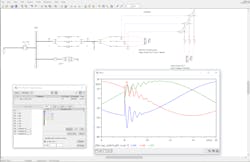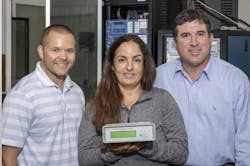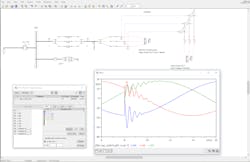U.S. National Lab Helps Puerto Rico Get Its Grid Up and Running
As Puerto Rico works to restore and modernize its power grid after last year’s devastating Hurricane Maria, researchers at Oak Ridge National Laboratory are helping the islanders evaluate the damage and identify opportunities to make the power grid better withstand future disruption. Researchers from ORNL and other DoE national laboratories were tasked by DoE’s Office of Electricity to evaluate and analyze options and to offer tools as the effort proceeds.
Some of the approaches will include simulations of the Puerto Rico transmission and distribution system for better planning, assessing the interdependencies such as fuel availability and power generation options, evaluating the use of distribution generation such as microgrids, and deploying sensor deployment for better situational awareness.
The first step for ORNL scientists and engineers was to construct a model of the Puerto Rico grid and a planning model that automatically populates protective relay schemes to safeguard the flow of electricity. ORNL also deployed state-of-the-art sensors on the island to monitor the grid state and validate the model’s accuracy.
ORNL Researchers (l to r) Nils Stenvig, Isabelle Snyder, and Travis Smith are developing tools and deploying sensors to aid decision-making as Puerto Rico rebuilds and modernizes its power grid.
The Puerto Rico Electric Power Authority (PREPA) now has at its disposal an ORNL-developed Dynamic Protection-Planning Model that predicts the dynamic behavior of the electrical grid if there’s severe weather or other impacts. “The tool can take the projected path of a hurricane and immediately provide predictive analysis of how transmission equipment could be affected,” says Nils Stenvig of ORNL’s Power and Energy Systems Group. Such information can be crucial for planning and recovery efforts.
The tool is a first for the power industry, as it combines planning models that utilities use to predict grid behavior with detailed information about protective relay hardware. Protective relays control circuit breakers that isolate grid disturbances and prevent them from propagating, such as when a tree falls on a power line and triggers what operators call a fault.
The resulting simulation provides more realistic, complete, and accurate analysis of grid events. The tool provides insight into protective relaying schemes and could yield suggestions for locating strategic infrastructure so that outages are minimized and do not cascade through the grid.
Stenvig notes that for a power grid facing an immediate threat, the tool could support tasks such as predictive islanding: proactively isolating portions of the grid expected to be hit the hardest to keep as much of the grid running as possible during a weather event.
For Travis Smith, a protection system engineer with years of utility experience who now works in the PES Group at ORNL, the research is a personal calling. He previously developed advanced modeling tools for DOE that take into account protective relays and expanded them for the Puerto Rico project.
“Protection engineers know how to calibrate relays individually, but this tool gives them a way to analyze and coordinate the entire grid and make improvements,” Smith says. “This is a roadmap utilities can use to modernize their grids.”
Another modeling tool being developed for Puerto Rico will analyze locations where new power generation can be sited and cost-effectively added to the grid. “This tool will tell you how much power you can inject into the system at different points without having to perform expensive upgrades. Sometimes those transmission network upgrades end up costing more than the new generation,” Stenvig says.
A sample of the modeling tool developed at ORNL to help utilities update and upgrade the hardware protecting their power grids.
ORNL’s computational scientists are also evaluating locations on the island where equipment such as spare generators and transformers could be strategically placed for easy, secure access after a natural disaster.
To help visualize Puerto Rico’s grid and validate modeling work, ORNL researchers are deploying 20 GridEye sensors that constantly monitor and report on the island’s grid generation and transmission network.
These low-cost easily installed sensors plug into standard 120 V outlets and record data on electrical disturbances using a patented triangulation algorithm. GridEye sensors, developed by University of Tennessee/ORNL Governor’s Chair Scientist Yilu Liu, have already been deployed at hundreds of locations across the U.S. to provide wide-area situational awareness of the grid.
The sensors are being placed inside utility substations, universities, and commercial buildings in Puerto Rico. They are connected to the internet and synchronized with each other via a global positioning to provide voltage, frequency, and other measurements, and to give validate the researchers’ models.
“The sensors provide time-synchronized data on changes such as demand load fluctuations and generator drops at higher resolutions than was previously possible,” Liu explains. “This is critical for model validation. It tells you how good the simulation is if you can compare it with real measurements.” The next phase of the work could involve developing a tool that takes GridEye data and provides automatic alerts to PREPA of any major system changes.
ORNL is working in another area aimed at the island’s economic vitality by analyzing potential investments in microgrids for commercial and industrial customers.
Microgrids consist of local power generation and energy storage equipment and have become popular for diversifying a utility’s generation mix in terms of fuels and geography. They can give communities power reliability and even help stabilize the larger grid. ORNL has conducted extensive research on microgrid communications and controls to improve them.
GridEye sensors such as the one shown at top are being deployed in Puerto Rico to monitor the power grid state and validate modeling and simulation tools developed by ORNL.
In service of Puerto Rico’s economic development authority, national lab researchers are analyzing proposed microgrid projects for industrial corridors. This includes selecting sites around the island where industrial properties would benefit most from microgrids. Researchers consider fuel availability, costs, reliability constraints, local geography, existing power infrastructure, and industrial tenants.
“Microgrids would help businesses across the island, as well as the surrounding neighborhoods,” Stenvig says. He noted that after last fall’s hurricanes, some Puerto Rican business owners in rural areas turned themselves into humanitarian depots, distributing drinking water and providing shower facilities.
As the work in these areas moves forward, the researchers continue to get feedback from the utility and economic development authority to improve the tools. The researchers note that the capabilities being developed to improve energy systems in the island territory could provide a platform for industry-wide grid improvements in the future.
Smith, for instance, is developing concepts for a “smart relay,” protective hardware with processing capability so it could communicate with other hardware and the utility’s controls to automatically change relay settings as conditions change. “Right now, those settings are pretty much static,” Smith notes. “Sort of a set-it-and-forget-it scenario in some cases. This kind of work could end up being the future of protective relays.”
ORNL researchers are also developing ways to harden the grid physically. For example, more flexible utility poles could bend rather than break in high winds or be safely collapsed ahead of a storm and unfolded afterward to protect power lines. The lab’s expertise and capabilities in 3D printing could also be leveraged to more quickly design and produce these improvements.




